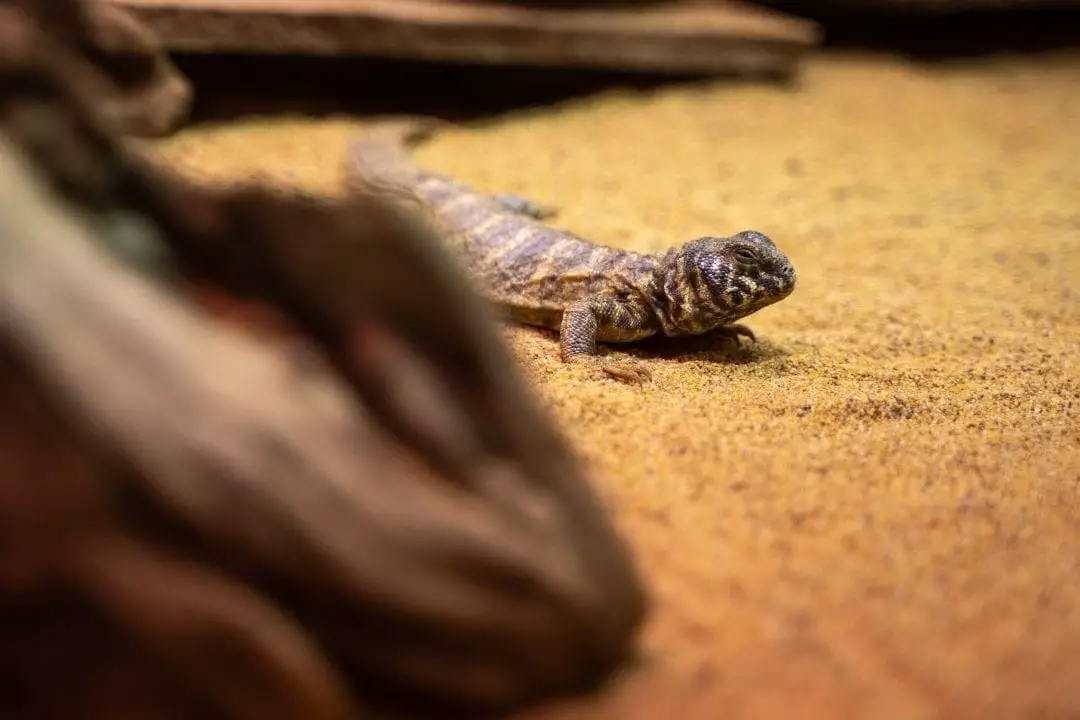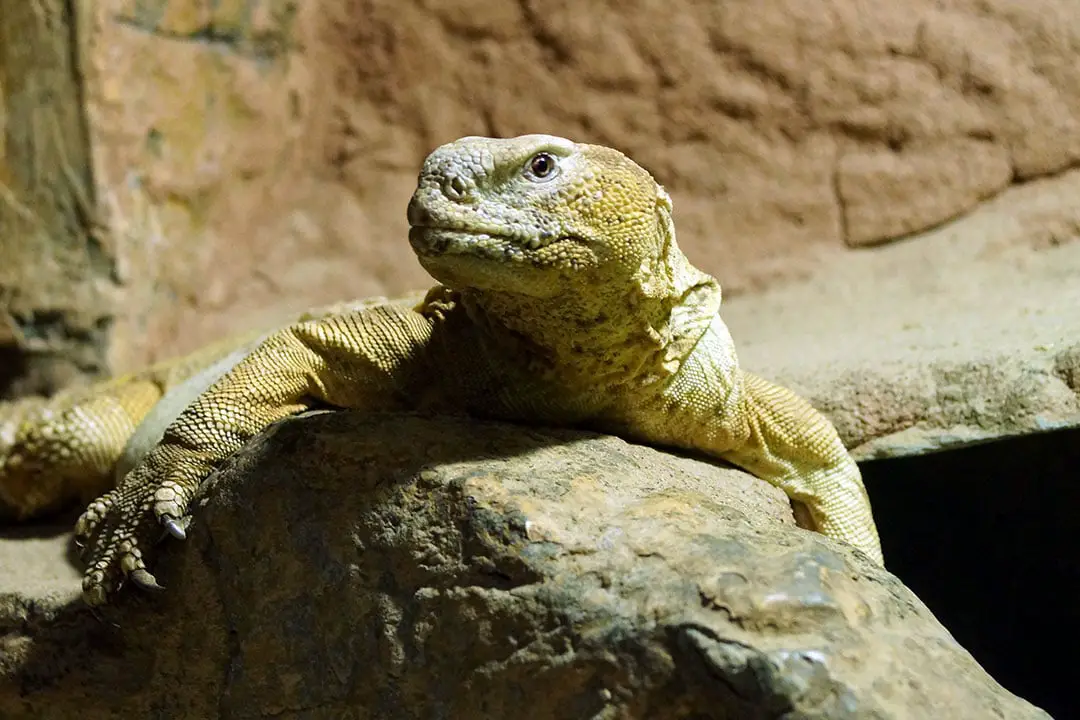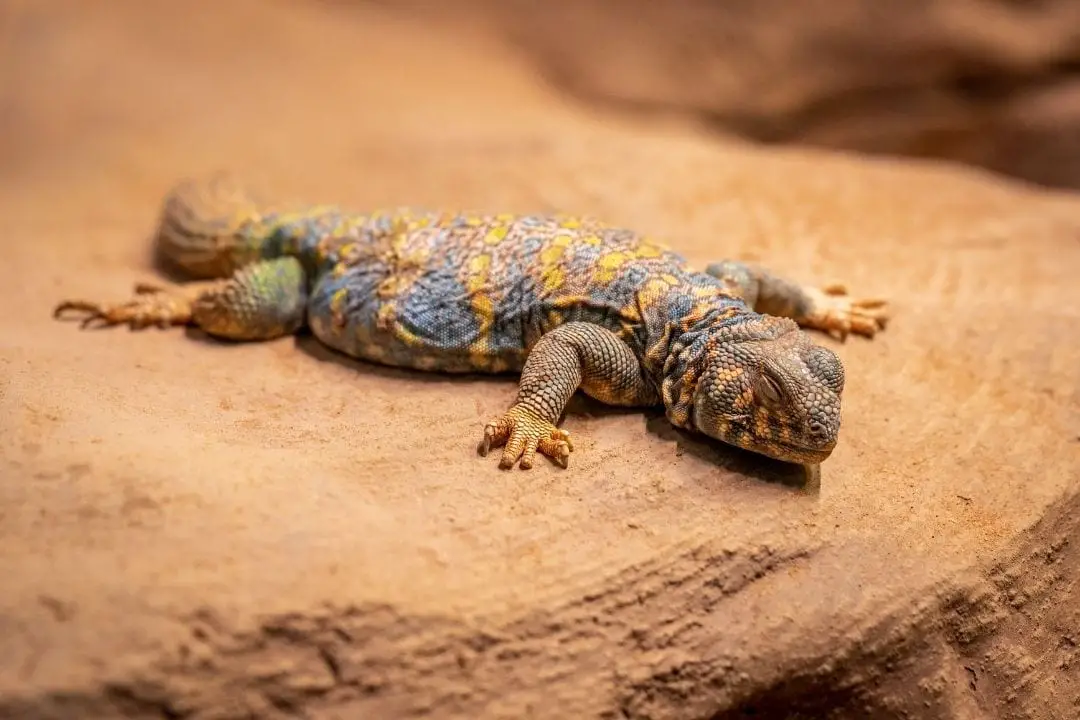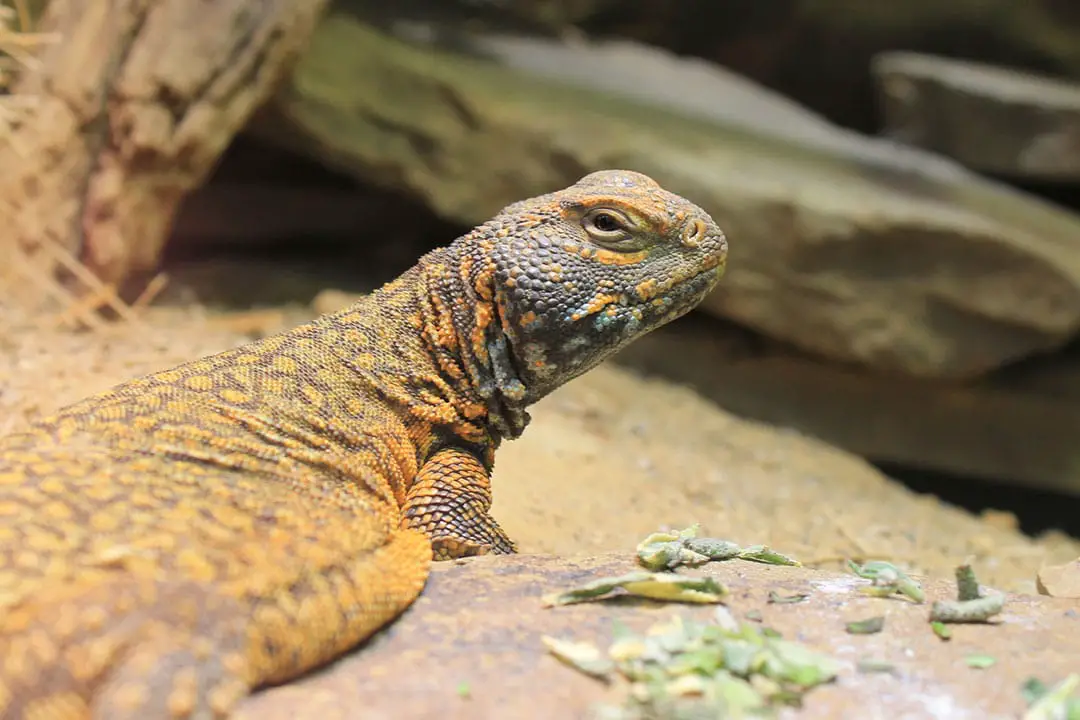Uromastyx are agamids lizards that heavily prefer arid and rocky environments. In captivity, you have a number of substrate options.
I will be going over the best options. These should work for most species like the egyptian uromastyx or ornate uromastyx, but you some species like U. yemenensis and U. macfadyeni need slightly higher humidity levels.
Neither are common in captivity, but if you have one I would advise a desert substrate that supports 30-50% humidity.
Recommended Safe Substrates for Uromastyx
1. DIY Desert Mix
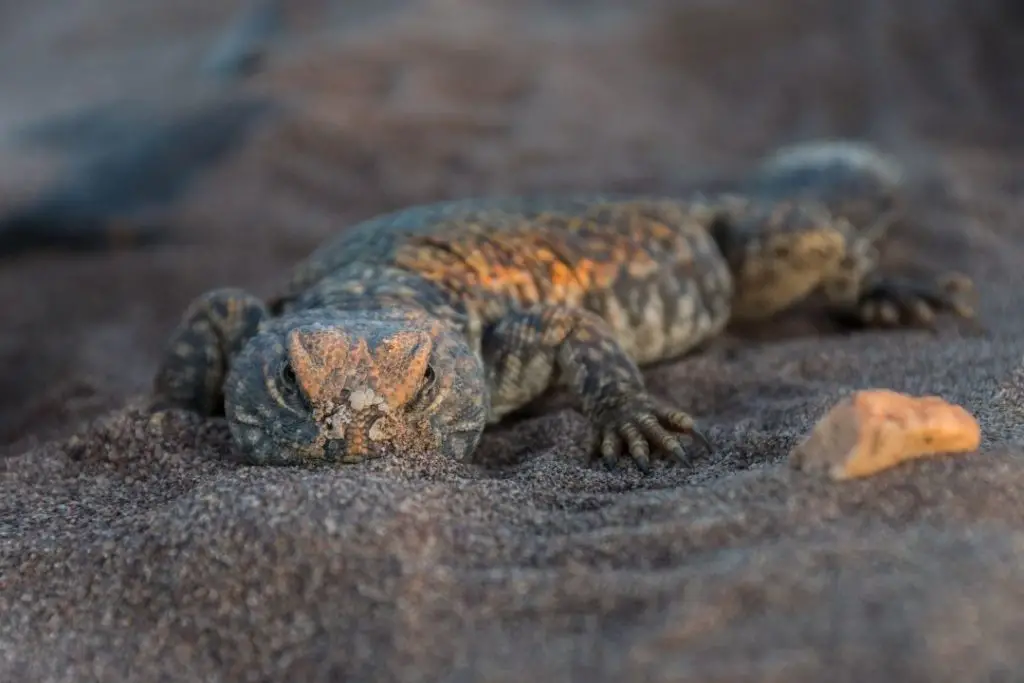
A DIY desert mix is the best option for all species of uromastyx.
You can easily switch it up to fit the coastal species that need more humidity.
You can also create a deep natural substrate layer that allows for natural burrowing behavior.
The top inch or so should stay dry, but it should be somewhat damp below this.
This allows your uromastyx to create a humid burrow just like they do in the wild. Even if you decide to go with a different option, offering a dig box filled with this substrate allows for enrichment.
The basic mix is 50% play sand, 30% organic topsoil, and 20% excavator clay.
Be sure to used washed play sand. Do not use very fine sand or calcium sand. This gives a similar mix to most of their native range.
You can add slightly more sand on top and cover with rocks and gravel to create something very close to their native range.
This option also tends to be cheap, which is great for filling up larger enclosures for uromastyx lizards.
The main downside is that you must mix it yourself and that it can be an impaction risk for young hatchlings.
2. Mixed Substrates
If you don’t want a natural look, mixing substrates works very well. You can use tile, stone, or paper towel on the hot side.
Giving your uromastyx a few basking options is a great way to keep it happy. This gibes it the chance to choose the exact basking temperature it wants without sacrificing comfort.
Be sure to check surface temperatures if you are using stone. You can then use unglazed ceramic or stone tile or paper towel in the middle as a place to offer food.
Finally, the cool side can be filled with 6-8 inches of substrate to give your uromastyx a chance to burrow.
Deeper is better, but it can be hard to offer a very deep substrate. Wild uromastyx can dig down 4 feet to find cool and humid soil.
The main issue with this type of setup is that it doesn’t look the best normally. It is very easy for the animal. Your uromastyx will not care about the aesthetics.
3. Reptile Sands
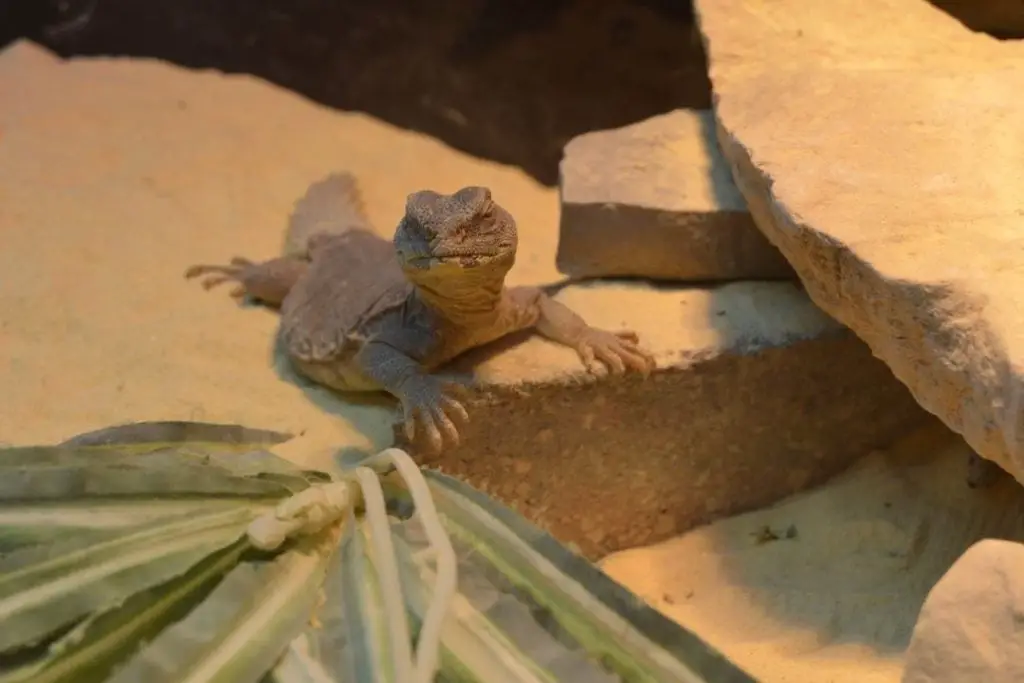
There are some great reptile sands out there. For instance, Exo Terra Desert Sand, ZooMed ReptiSand, JurassicNatural Australian Desert Habitat, and Jurassic Sands Reptile Substrates can all be great options.
Play sand can also work to mimic the saharan uromastyx natural substrate.
You can use these on their own and only use pure sand, but be warned that your uromastyx will eat some while they are burrowing.
Some of these contain calcium carbonate to fight the metabolic bone disease.
Zoo Med ReptiSand®
- All natural no dyes or colors added
- Perfect for desert reptiles
- Stimulates natural digging behavior
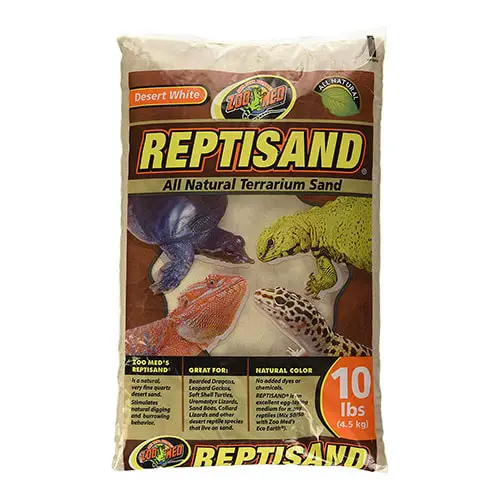
Do not offer this to young uromastyx under 5 months old. Sand isn’t quite perfect as a substrate. Uromastyx live in rocky areas.
If you use sand or any other loose substrate, you need to make sure your uromastyx can’t burrow under anything heavy and be crushed.
4. Tile and Stone
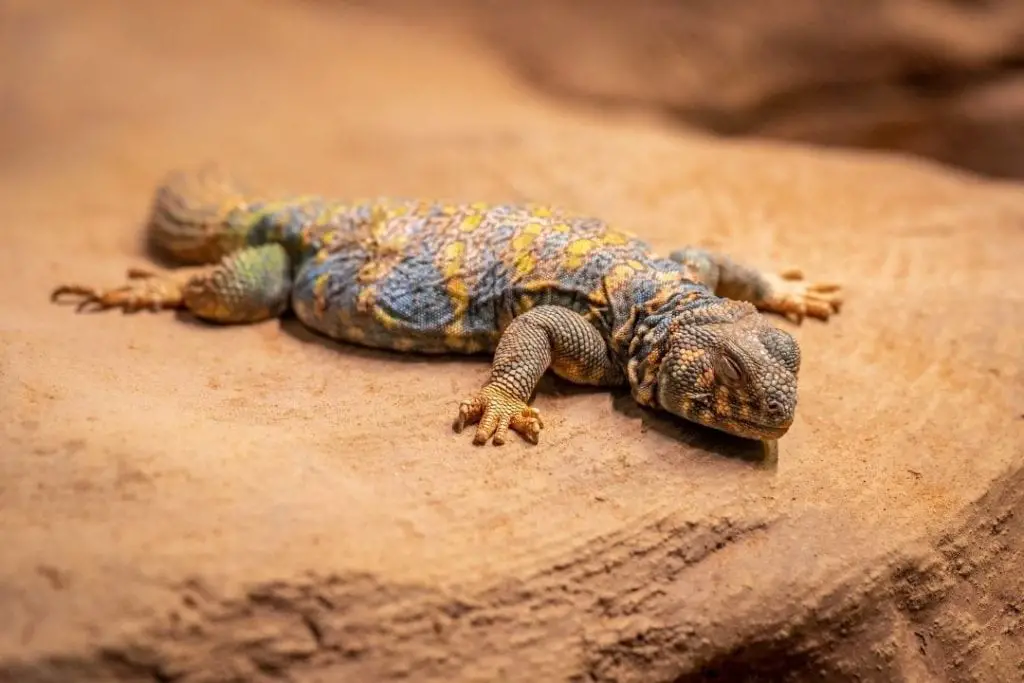
Unglazed and untreated tiles and stone can work well. You must be careful they do not get too hot by checking the surface temperature with a temperature gun.
Only use unglazed tiles. Glazed ceramic tiles are too slick and your uromastyx will struggle to move. Riles can be easy to clean.
Make sure you do not use anything toxic. Unglazed ceramics can absorb cleaners and harm your pet. Tiles can help avoid impaction from substrates.
However, they do not allow for burrowing behavior. Once your uromastyx is older, a dig box can be great enrichment.
You will also need to provide several small hides to mimic the uromastyx lizards natural burrows. You will also want at least one humid hide.
Tile will also not hold humidity. This makes it a poor choice for the coastal species that need higher humidity.
5. Paper Towel
Paper towel is a great choice for new uromastyx. Paper towel allows you to monitor your pet’s health. You can easily see any differences in feces or urates and make sure your pet is healthy.
Most hatchlings are kept o. paper towel to start.
Paper towel is also not likely to cause an obstruction. If you are ever worried about disease or parasites, paper towel is the best substrate to use. It does need to be replaced frequently.
It also doesn’t hold heat, so you may need to adjust your heating. It can be used permanently if you prefer.
However, it does not allow for natural burrowing behavior. You may want to provide a dig box if you will be using paper towel long term.
Unsafe Substrates
I do want to go over unsafe substrates for your uromastyx enclosure very quickly. First, millet and other seeds are recommended by some keepers.
Your uromastyx will eat these. They are high in fat and can cause obesity. Calci-sand and other rough sands are also unsafe for uromastyx.
Do not use any humid substrates and anything made from coniferous trees. Humidity-retaining substrates can cause scale rot and respiratory illnesses.
Coniferous substrates like pine and cedar are toxic to reptiles.
Clay and walnut shells are also a bad idea. Check any substrate to make sure it isn’t too rough. Rough substrates can hurt your pet.
Conclusion
You have plenty of great substrate options for most uromastyx species here.
Pick what works best for you and your pet. Some substrates may be easier to access in your area.
Be sure to look at their native habitat to learn what is best for your pet to ensure they live a long and healthy life.
Just don’t use the unsafe options and your pet should be fine.
If you have any questions or comments, please leave them below.
